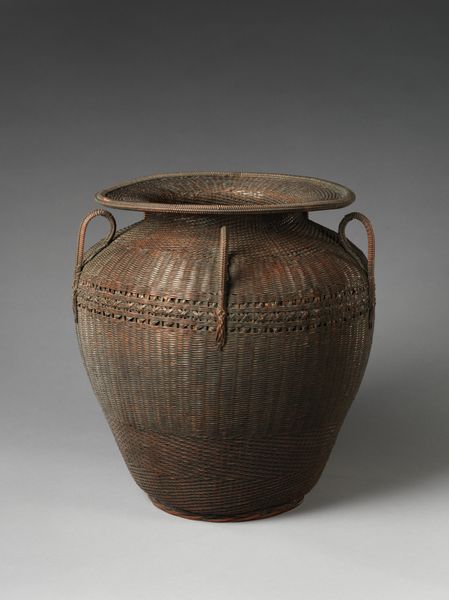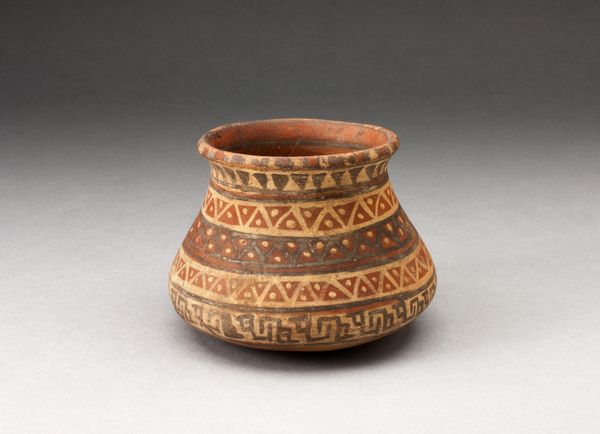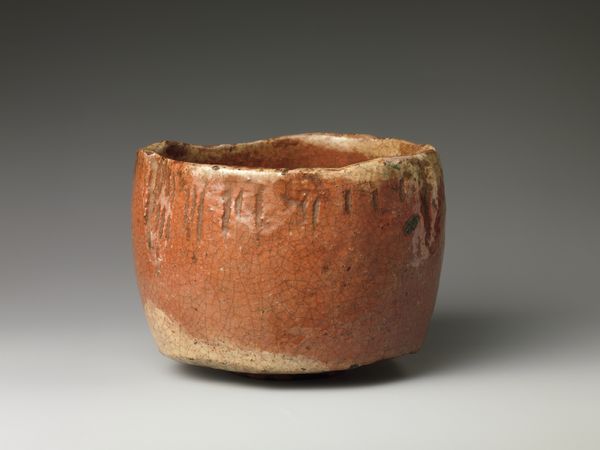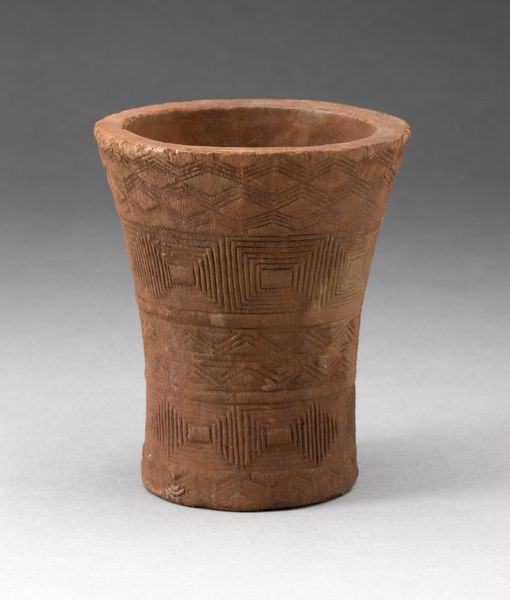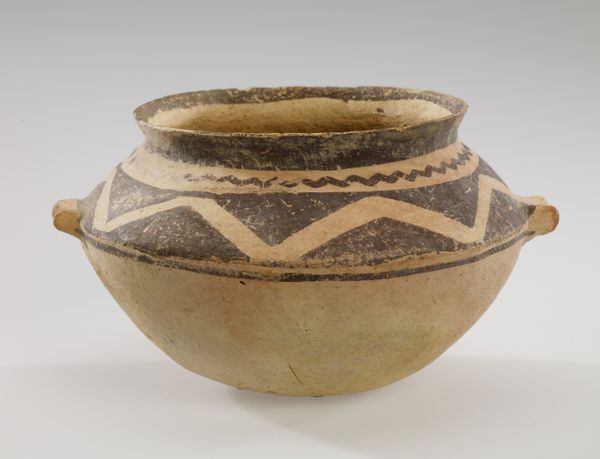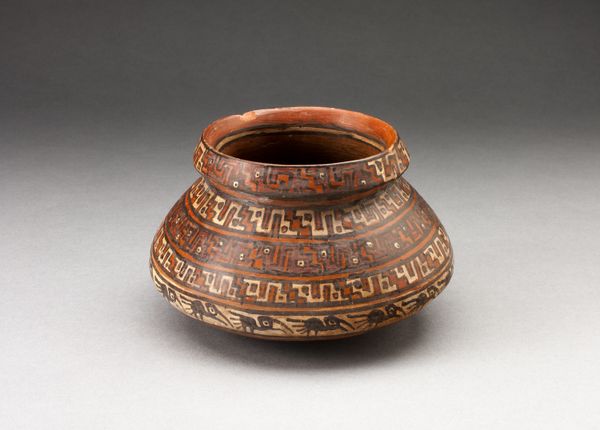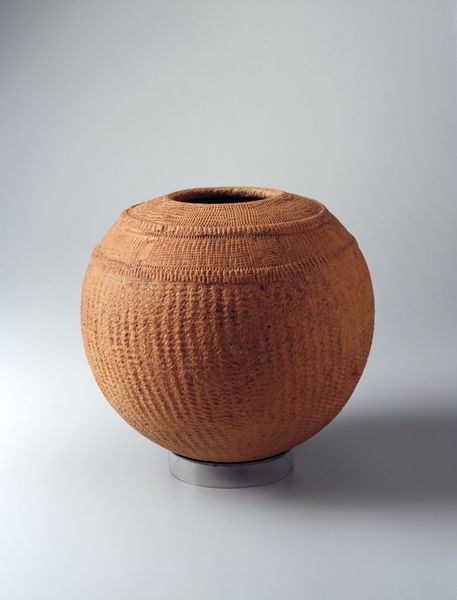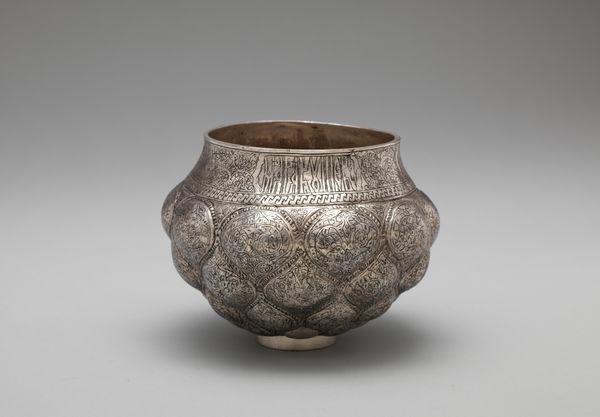
Vessel Incised with Panels of Textile-like Motifs Possibly 1450 - 1532
0:00
0:00
carving, ceramic
#
carving
#
ceramic
#
stoneware
#
geometric
#
ceramic
#
indigenous-americas
Dimensions: 11.9 × 12.4 cm (4 11/16 × 4 7/8 in.)
Copyright: Public Domain
Editor: This object is an Inca vessel, dating from possibly 1450 to 1532. It’s ceramic, and has been carved with geometric designs. It looks like a lot of care went into creating the surface details, with motifs that are very similar to textile work. What catches your eye about it? Curator: For me, the fascinating thing about this piece is how it challenges our ideas about high art versus craft. It is undeniably functional, a vessel. But the act of carving these textile-like motifs transforms it. Editor: In what way? Curator: It suggests a sophisticated understanding and use of labor and materials. Think about the process of making a ceramic vessel, then carefully carving these designs. We can almost imagine the artist’s hand at work, their techniques and the socio-economic value embedded in the labor. Does that makes sense? Editor: It does! So you're suggesting it collapses distinctions of craft and art, as the skill and design elevate what would be a normal item to something beautiful. Like the vessel as raw material, transformed. Curator: Precisely. And the choice of textile patterns is key. Textiles were incredibly important in Inca society, a form of wealth and status. By replicating these patterns in ceramic, the artist elevates the status of this material, perhaps alluding to ideas about cultural consumption, use and value. Editor: I never thought about it that way. I was initially just seeing it for the nice decorations. Curator: Often focusing on materials helps reveal cultural practices we sometimes take for granted. I mean, thinking about consumption through the making reveals interesting perspectives. Editor: Definitely. Now I'm curious about the different meanings we ascribe to clay and textiles today. It is like how the change in material creates an alternative viewpoint. Thanks for showing that to me!
Comments
No comments
Be the first to comment and join the conversation on the ultimate creative platform.

